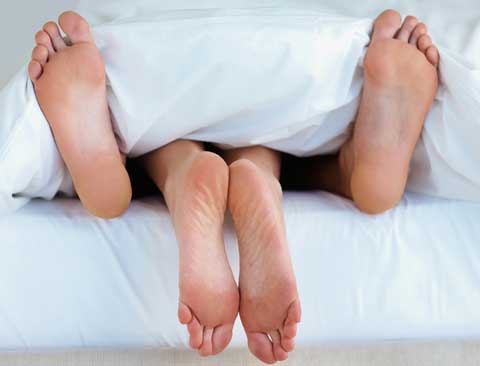Orgasm-Seeking Women Find Little Help From Science

For one out of four women, orgasm during sex is an elusive goal. According to a new report, medical science isn't doing enough to ensure these women find satisfaction between the sheets.
The paper, published online ahead of print in the Journal of Sexual Medicine, reviews 101 studies on female orgasm disorder, a condition in which women have difficulty reaching climax or can't orgasm at all. Despite the fact that inability to orgasm is the second most common female sexual complaint after lack of desire, and orgasm is one of the top 50 reasons we have sex, treatments for the disorder are inadequate, the authors conclude.
"We're not doing enough research," said Waguih William IsHak, a psychiatrist at Cedars-Sinai Medical Center in Los Angeles and the lead author of the paper. "There are a lot of great clinicians who work with patients using therapy, but when it comes to medications, it's all trial and error."
A common problem
To qualify as a disorder, anorgasmia, or the inability to orgasm, must be persistent and must interfere with the patient's quality of life or relationships. If the patient isn't bothered by their lack of orgasms, IsHak said, the disorder isn't present.
However, difficulty orgasming seems to be very common among women. A 2001 study found that 24 percent of women reported months-long stretches in which they couldn't climax during sex. The complaint is most common in women in their 20s to 40s, IsHak said.
Only a fraction of anorgasmia cases come to the attention of clinicians, he said.
Sign up for the Live Science daily newsletter now
Get the world’s most fascinating discoveries delivered straight to your inbox.
"There's a lot of shame about sexual dysfunction," he said. "There are a lot of implications in terms of what relationships the person's having. They might be afraid it might complicate their relationships more, so people tend to underreport it."
Causes and cures
Even when patients seek medical help, treatment can be difficult. There is no "normal" when it comes to timing or number of orgasms, so clinicians must take into consideration their patients' age, sexual experience, satisfaction and even the quality of sexual stimulation they receive before making a diagnosis.
Teasing out the root cause of anorgasmia is another challenge. In many cases, the problem is psychological: Past abuse, guilt over sexuality and poor body image are all associated with difficulty orgasming. Rocky relationships and lack of communication about sex are other factors. In these cases, the best treatment might be relationship counseling or psychotherapy.
For other women, the problem is medical. Kidney disorders, fibromyalgia and atherosclerosis (the narrowing of arteries due to cholesterol buildup) are all associated with anorgasmia, the review found. Weakness of the pelvic floor muscles, which can occur after childbirth, is another factor. So are hormonal changes and some medications, particularly antidepressants called selective serotonin reuptake inhibitors (SSRIs).
In these cases, treating the underlying physical problem can help. Kegel exercises can strengthen the muscles of the pelvic floor. Patients on libido-killing SSRIs might benefit from a switch to the antidepressant buproprion (better known as its brand name, Wellbutrin), which doesn’t cause sexual side effects. A few studies also find benefits to the use of hormone supplements like testosterone and estrogen, although testosterone can have masculinizing side effects, and estrogen has been linked to some cancers.
A need for research
So far, there are no drugs approved by the FDA specifically for the treatment of female orgasmic disorder. On June 18, a drug called flibanserin, intended to treat low female desire, was rejected by an FDA advisory panel on the grounds that the benefits of the drug did not outweigh the risks.
The recent review by IsHak and his colleagues found that a few studies showed promise in hormone therapies and drugs like Viagra, but for the most part, these studies were too small or poorly set up to draw any firm conclusions. For example, one 2003 study found that a botanical oil called Zestra was effective in improving arousal and orgasm in women. But the study only included 20 participants, 10 of whom received the oil and 10 of whom receive a placebo. That's too small of a sample to know for sure whether or not the treatment works.
"We need larger studies with larger samples and adequate dosing of the medicines in order really to test the effect," IsHak said. "If we're really serious as a society about quality of life of individuals, then we need to pay attention to sexual dysfunction."

Stephanie Pappas is a contributing writer for Live Science, covering topics ranging from geoscience to archaeology to the human brain and behavior. She was previously a senior writer for Live Science but is now a freelancer based in Denver, Colorado, and regularly contributes to Scientific American and The Monitor, the monthly magazine of the American Psychological Association. Stephanie received a bachelor's degree in psychology from the University of South Carolina and a graduate certificate in science communication from the University of California, Santa Cruz.










